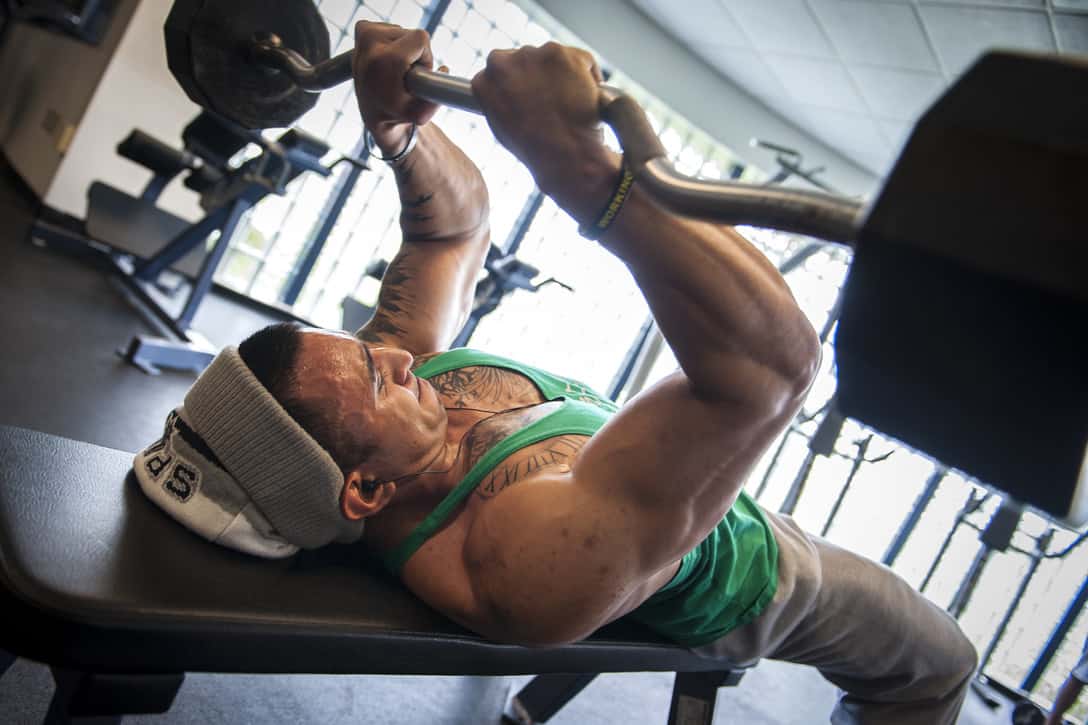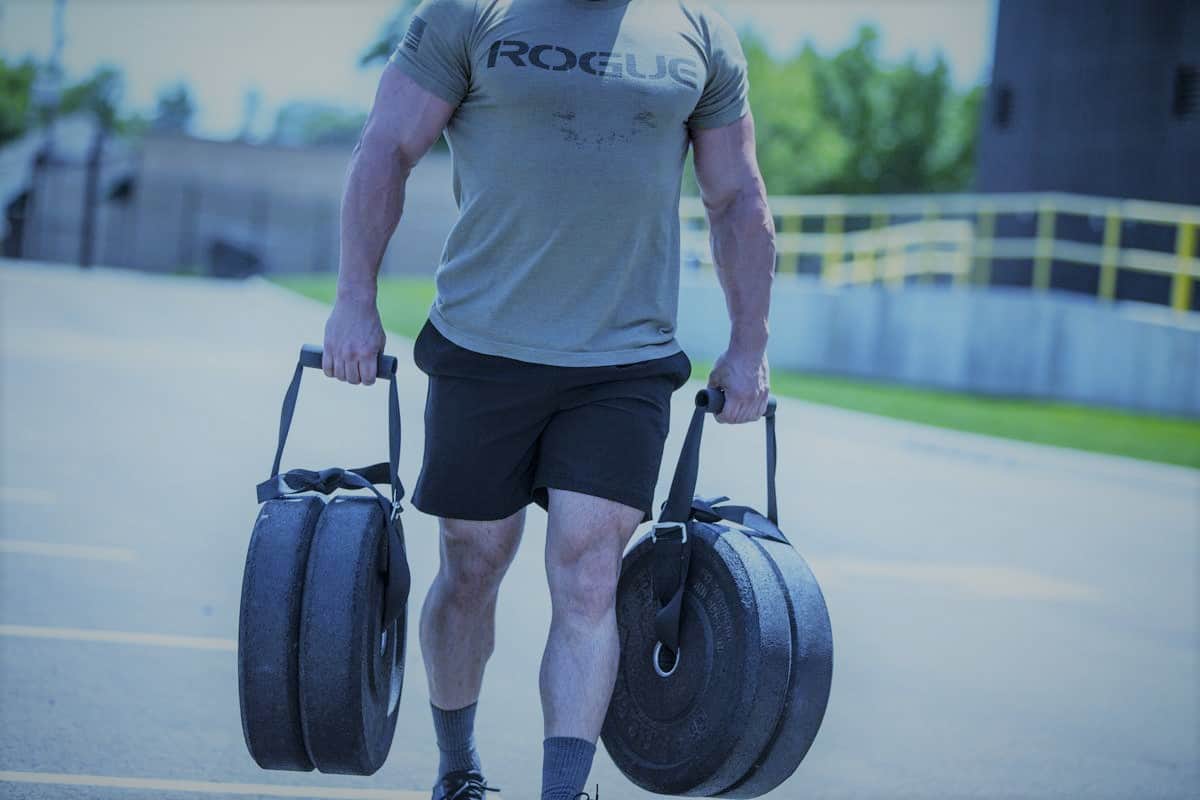At first, you’d be led to believe that the key to be a great powerlifter is strength alone. But most powerlifters can tell you that it’s not enough to have the talent and/or capacity to lift heavy – you need to make the most of that talent, as well. Given the rule of specificity, then, you’d think a typical powerlifting program was all about hitting triples, doubles, and singles, with a few mobility movements thrown in to keep the joints healthy. But training that way will quickly wear you out, lead to injury, and cause diminished gains in the long-term. That’s why it’s important to utilize a powerlifting program for mass and strength.
The point of a powerlifting program for mass is, ultimately, more strength. Beginner powerlifters fall prey to the idea that powerlifting is the superior way to train, and all the squat rack curlers and half-repping bodybuilders they see at the gym are just wasting their time in pursuit of vanity. But the thing is, powerlifting isn’t really a training methodology – it’s just a sport, and there are many ways to train for that sport. And part of training efficiently for powerlifting involves doing many of the same exercises you might scoff at, including higher squats without lockout, machine work, tempo dumbbell presses, and chest flies.
Why Should Powerlifters Bother with Mass?
Before you go ahead and judge your local bodybuilder for being big and pretty but weaker than the average lifter, understand that the pursuit of strength on the platform is just as vain as the pursuit of a top 5 finish at a local competition. There is no better sport.
Powerlifting and bodybuilding training philosophies are not completely divorced from each other, in large part because bigger muscles give a person greater potential for strength.
A training style focused entirely on hypertrophy will yield bigger muscles and more muscle fibers than a training style focused entirely on strength, with the added benefit of generally being much easier on the joints and CNS, thereby allowing more total volume and overall training frequency. On the other hand, training entirely for strength will yield massive short-term strength gains, but also opens you up for greater injury due to higher fatigue levels, and potential overuse damage.
By combining both through smart periodization, you can reap the benefits of hypertrophy training (bigger muscles, more muscle fibers) and the benefits of strength training (teaching the muscle to move weight efficiently) through a powerlifting program for mass.
Powerlifting is not a very technique-dependent sport (you’re likely to reach near-optimal efficiency in a lift with minimal coaching within your first few years), and you’re only going to get diminishing returns trying to focus entirely on the big three when you could be using your physical resources more efficiently by building mass and strength.
You need to periodize your training. That way, you can reap the rewards of:
- Fewer injuries.
- Bigger muscles.
- Going into heavy cycles while feeling fresh.
- Taking advantage of your adaptive response.
- Not getting bored with frequent variation in training.
- Consistent overload.
You Can’t Train at 110% All the Time
The first rule of any training methodology is that you only get stronger, faster, or better at something if you up the ante. This is called progressive overload. In powerlifting training, there are two factors you can focus on to up the ante: volume (number of reps per set/day/week, total weight moved) and intensity (weight on the bar, or percentage of max lift). Because of the limits of the human body, you can’t except to make gains by focusing solely on one of them.
If, for example, you start with the empty bar and add 5lbs every week, you’re going to end up with a 1345lbs deadlift in 5 years. Only that’s over 200lbs past the current world record, and most people lifting within the ranges of 700-900lbs have been training for ten years or more, not to mention the fact that most beginner trainees start with more than just an empty 45lb barbell.
You want to manipulate your training effectively in order to keep making use of the principle of progressive overload, so you’re constantly putting resources towards growing bigger and stronger. Proper periodization is an important part of doing so efficiently.
What is Periodization?
The most basic form of periodization is one where you spend a few months focused on improving your size, while still training the big three at greater overall volume (say, 5×5 or 4×8), followed by a ramping intensity block where your hypertrophy training drops off and your strength training builds up (with sets closer to 90% 1RM, more triples, fewer accessories), and a peaking phase of two to three weeks before a competition (with a short deload before the big day).
This way, you’re reaping the benefits of high-intensity training (at or around 90-95%, maybe with a single session of easy 100-105% singles a few weeks before the meet to test the opener) without crossing over into a threshold where your high-intensity training is reaping diminishing returns, or an abnormally high injury rate.
This is especially important for most lifters, because we’re not professional athletes. This means we do not have the time nor the resources to dedicate ourselves ideally to our recovery. Many of us work long shifts, many of us can only hit the gym for an hour a day, many of us don’t have the means to eat or sleep as well as we might like, and visit a PT as often as we maybe should. That’s why minimizing injury is just as important as getting stronger, because an injury will not only force you to deload drastically, but depending on the nature of the injury, it may leave you much weaker afterwards. To recap:
- Build size in the Hypertrophy Phase.
- Build strength in the Strength Phase.
- Optionally build more strength in the high-volume, high-intensity Intensity Phase.
- Prepare to peak in the Peaking Phase.
- Take a week or two off, repeat.
The Repeated-Bout Effect
Because the human body is geared towards adaptability, we have the capacity to become monstrously strong – but we also do our best to use as few resources as possible in the pursuit of doing so. As such, whenever you train, your muscles try to protect themselves by minimizing the effects of your next training session as much as possible through something called the repeated-bout effect.
The more you do a specific movement, the more efficient you become at that movement, and the less of a training stimulus it provides. This is also why progressive overload through volume (more reps) and intensity (more weight) is important.
However, you can also make use of your body’s adaptive response and utilize a varied training style to keep it from reaping only diminishing returns from each training session. This is the basic gist behind daily undulating programming (DUP), where a variety of training styles are blended to induce what bros call “muscle confusion” (not the best way of explaining it, but it’s pretty similar). You don’t need DUP to get stronger or bigger, and there are many powerlifting programs that don’t utilize it.
Picking a Powerlifting Program for Mass
If you want to build your own powerlifting program for mass, start by identifying your goals. How far are you from your ideal weight class? Do you need a lot of extra work packing on muscle, or are you quite close to your muscular limit? Are you a total beginner, or an experienced lifter?
I generally recommend beginners to focus on building a base of strength. It helps to incorporate a few sets of bodybuilding-style training at the end of each training session, but a beginner powerlifter should be utilizing a training that has them lifting often. You can start with 3-4 sessions a week, doing the squat, bench, and deadlift at different intensities (sets of 8-9 on Monday, sets of 5 on Tuesday and Friday, and sets of 3 on Wednesday) each session, combined with a basic bro split afterwards (hitting two body parts with a selection of 4-6 exercises in total every training session).
More advanced trainees will have to move past a basic linear program and start developing some form of periodization to make efficient gains. That means having training blocks focused on accumulating volume and muscle size, followed by a strength block, an intensity block, and peaking. This is the most basic periodization structure, and you can utilize different rep schemes, methodologies, and schools of lifting to make the most of it (for example, you can utilize 5/3/1 Boring But Big for your first three cycles, then switch to 3/5/1 for Powerlifters or 5/3/1 5s PRO at higher percentages and Joker sets, then 3/5/1 with singles instead of Joker sets, and finally, a quick peaking program before a meet). Some popular “powerbuilding” programs include:
- 5/3/1 Boring But Big – Simple, easy to remember, grueling as you get stronger. There are no training blocks here, and this program is typically better for beginners looking to accumulate more volume and get better at the big three while still building size.
- Layne Norton’s PH3 – PH3 utilizes DUP to train both hypertrophy and strength every week, but the intensity ramps up towards the end, whereas you’re more focused on making the most of the hypertrophy work in the beginning. This also utilizes blood flow restriction, which is fun.
- PHUL – Short for Power Hypertrophy Upper Lower, this can be considered the linear version of Norton’s periodized PH3.
- GreySkull LP – another linear hybrid program, this combines hypertrophy with strength to help early intermediate lifters accumulate more overall volume.
Should You Use a Powerbuilding Program?
If you’ve gotten this far, then you know that the answer is “it depends”. Beginners need a lot of practice in the big three, which is why building a strength base is important. They’re also only capable of lifting weight at minimal efficiency, so they can squat, bench press, and deadlift much more often than a stronger trainee because their body just can’t move enough weight for any real risk of overuse injuries.
Once a beginner has accumulated enough experience and volume, they can work on just getting stronger for their first meet, or if they have the time, focus on packing on muscle mass with lower volume in the big three (3-6 total sets of squats, bench presses, and deadlifts per week). Then, they can ramp up the volume more aggressively and decrease their hypertrophy work the closer they are to their first meet if they’re serious about competing.
Advanced trainees need to be smarter about the way they train, and most of them should have a personal coach. If you love this sport and you want to get good at it, get yourself a coach. It’s just not enough to pick a program off the internet and take it for a spin. Even coaches have their own coaches, because the benefits of working with someone else to design your program extend past just having someone smarter at the helm of your training progress – it helps you push yourself, because your coach will have a better idea of what you need to do to get to where you want to get.
You can also try your hand at building your own powerlifting program for mass, but I strongly encourage you to start with a base and customize it to your liking. 5/3/1 is a very versatile training methodology that you can adapt to your training needs with additional volume, swapping the overhead press out for more bench press accessories, going 3/5/1 to space out the heavier weeks, adding Joker sets to add more intensity to easier training cycles, adding Boring But Big or First/Second Set Last sets after your main work and before your accessories to build more volume (great for early intermediate lifters), and so on. Even some of the more famous intermediate lifting programs, like nSuns’ 5/3/1, were based on Wendler’s original template and his many books.
Ready to Take Your Fitness to the Next Level?
Whether it's power building, recovery, or nutrition, our experts are here to help you succeed. Contact us today to get personalized advice, support, and a tailored plan that fits your goals.
Let’s build the strength and body you deserve!
CONTACT US NOW




